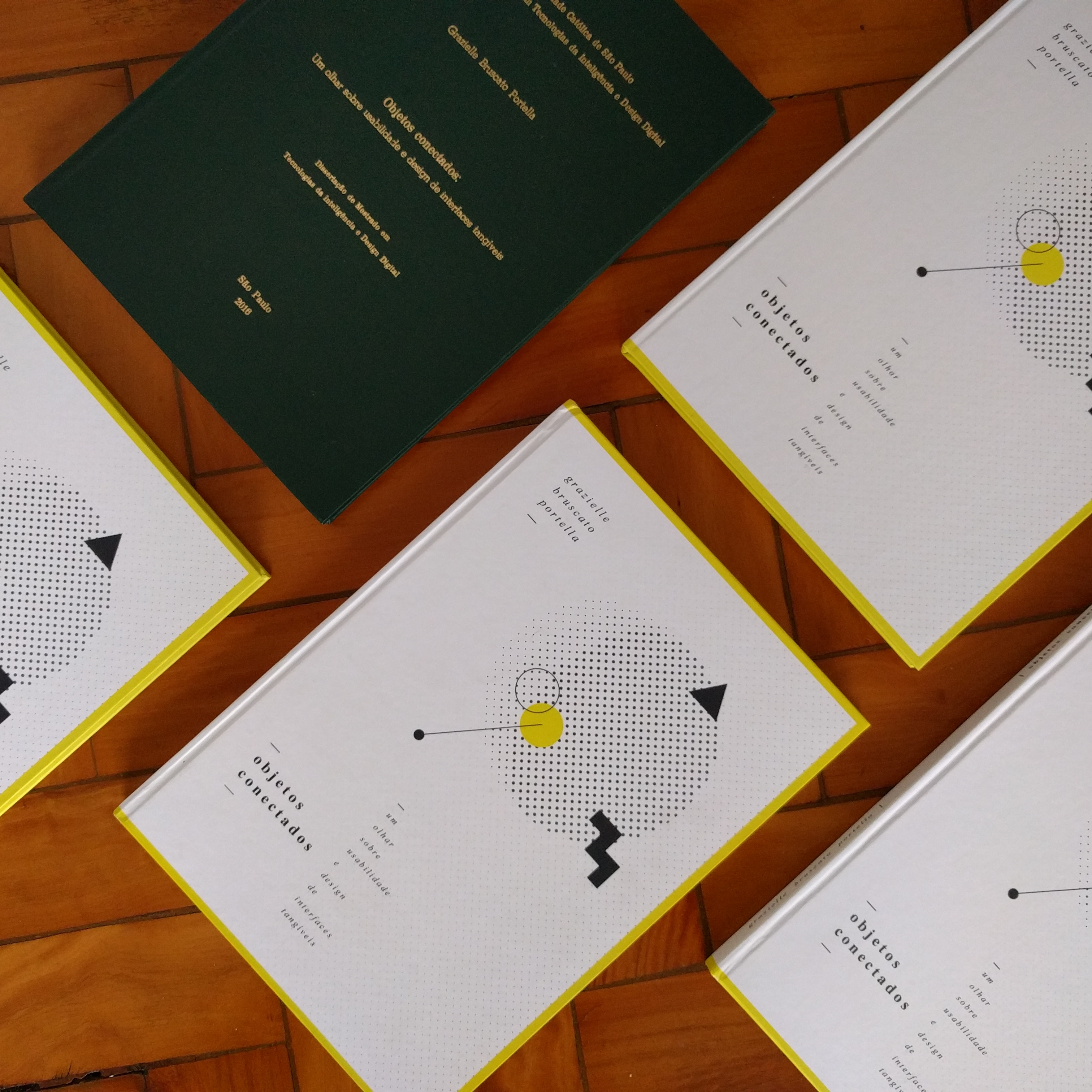at Pontifícia Universidade Católica de São Paulo
2014 to 2016
Master thesis focused on Human Computer Interaction and the phenomenon of the Internet of Things (IoT), which proposed new methodologies for product design and UX.
– Awarded a CAPES Full Scholarship.
This research proposes Tangible User Interfaces as a digital means of communication, from its conception to the moment of interaction. It poses a historical overview on the evolution of digital interfaces, from the first Graphical User Interfaces to birth of the Internet of Things, emerging phenomenon in the digital media that tangibilizes the information to connected devices.
The study also investigates methods for analysis and design of Graphical Interfaces from the point of view of interaction and aesthetics. Attributes from these methods are used to propose a methodology when designing Tangible Interfaces, where its principles are combined in additio to usability and handling aspects, concepts used in Product Design methods. In order to deepen this investigation, three experimental projects from the academic field were selected to analyse the design of assorted Tangible Interfaces and apply the proposed methodology: inFORM (http://tangible.media.mit.edu/project/inform/), a multi-touch interface that addresses remote an tactile communication processes; Daily Stack (https://vimeo.com/10458491/), which works as a means by which the user arranges abstract tasks through physical blocks connected to a software; and ZeroN (http://tangible.media.mit.edu/project/zeron-levitated-interaction-element/), which explores the user-machine interaction through levitation, questioning the object as an speculative medium of interaction.
Keywords: Interaction Design, Internet of Things, Usability, Tangible Interfaces,
Ubiquous Computing.
Link to dissertation
